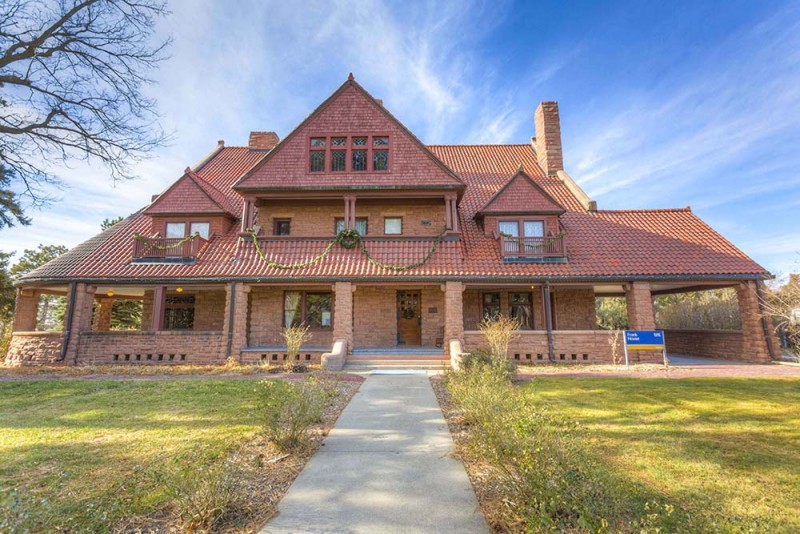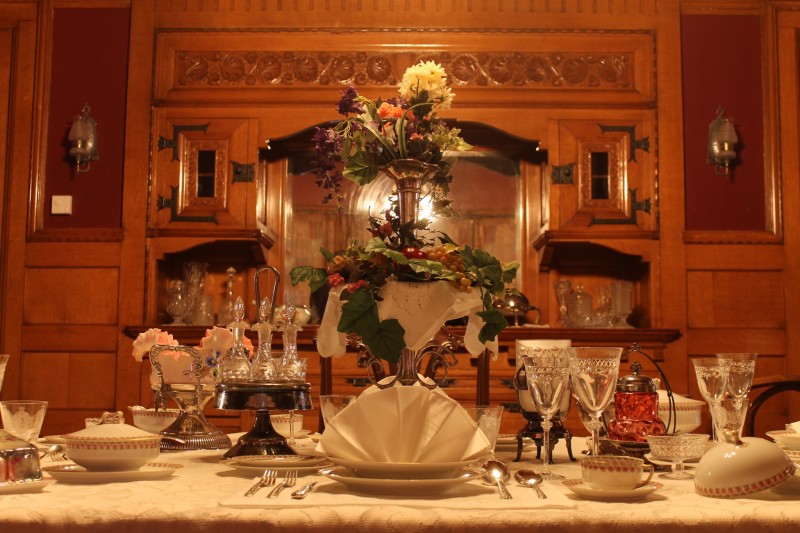NCPH New Professional Travel Award: Reflections from William Stoutamire
15 March 2016 – William Stoutamire

Frank House on the campus of the University of Nebraska at Kearney. Photo credit: University of Nebraska at Kearney
How can historic house museums remain relevant and engaging in the 21st century? That is the question before the nearly 15,000 such institutions currently operating in the United States. Much ink has been spilt debating the future of the house-museum model, from the pages of The Washington Post to The Boston Globe, even on this blog. Recent works by Donna Harris, as well as Franklin Vagnone and Deborah Ryan, have proposed many solutions, some quite “radical,” while also recognizing that there are no perfect, universal answers.
Even so, faced with declining visitation, aging audiences, and increasing questions about their relevance to modern society, historic house museums must be willing to subvert the status quo. While these places come in all shapes and sizes, their narratives have traditionally been far from diverse and their programming far from welcoming to all. Accusations that they often serve to merely enshrine the stories of elite (typically white, male) community “founders,” politicians, and business leaders often ring true, leading many potential visitors to feel that such places simply are not for them.
Thus, one possible answer to the problems besetting many house museums is the same as the answer to the relevance question. It lies, I believe, in reexamining the stories we share, in our willingness to challenge the exclusivity of our histories, and in our openness to overturning the operational models that make our visitors feel unwelcome or disengaged–including taking down those ropes and barriers that separate visitors from the space!
At the historic Frank House on the campus of the University of Nebraska at Kearney (UNK), we began this process by stepping back and surveying our own history. Founded in 1973, amid the fervor of the nation’s bicentennial, the Frank House has long been a traditional historic house museum. Tours focused on George W. Frank, one of Kearney’s wealthiest inhabitants in the 1890s, with special attention paid to family heirlooms and other indicators of the Frank family’s immense wealth. One early mission statement, reflecting this fascination with the upper class, stated that the museum’s purpose was simply to remind visitors of the “grandeur” and “elegance” of Kearney’s industrial boom.

Frank House interior. Photo credit: Zachary Chrastil
Today, we are working to broaden the narrative and potential audiences of our institution by complicating this history. This involves bringing forward previously underrepresented, misinterpreted, or simply untold stories of women, minorities, and domestic and industrial labor associated with the home and its inhabitants. These accounts serve as foils by which we can engage our community in discussions about issues of race, class, and gender in this region’s history. By crafting a more inclusive narrative, and placing the home into a larger historical context, we can begin functioning more as a community museum that explores the complexity and immense social and cultural tensions of the Gilded Age.
This broadening of our narrative extends in another way, as well, which begins by recognizing that we are what I like to affectionately call the worst house museum in the country. For all their wealth, the Frank family went bankrupt shortly after moving into their new mansion due to the Panic of 1893. This “house” museum only served as a private, single-family residence for about seven years, while later tenants included a small sanitarium and, for more than six decades, the Nebraska State Hospital for the Tuberculous. Rather than attempting to freeze the building in time, we are now working to restore portions of the home to different eras, allowing for the story we share to also talk about how and why this place (and this community) has changed.
One further way in which we are seeking to challenge exclusivity and remain relevant is by taking full advantage of our relationship with UNK, a 7,000-person regional university. This involves the reinvention of the museum as a history and humanities laboratory, with students from all levels engaged in a variety of activities. This semester alone, more than thirty students are working in some capacity for the museum, gaining valuable real-world experience in their chosen fields. They are producing short documentaries and developing digital interactives, designing new marketing materials and conducting small-scale restoration projects. In addition to keeping afloat an institution with one professional staff member, these students are also becoming personally invested in the museum. By better engaging this previously untapped audience, we have seen a dramatic shift for the better in the demographics and energy of the institution.
At the 2016 National Council on Public History Annual Meeting in Baltimore, I am looking forward to attending sessions regarding some of these issues and to networking with other professionals who are interested in upsetting traditional narratives/operational models and in changing the very nature of historic house museums. I am especially interested in engaging in conversations about overcoming the challenges that public historians often face in such endeavors–maximizing the potential of small budgets, working through university bureaucracies, engaging with constituents (and Board members) who are uncomfortable with significant change and difficult narratives or who remain attached to the romantic allure of the Victorian house museum, etc. Having these contacts, and being able to problem solve through these issues, will greatly serve both my institution and my own professional growth.
I would like to close by thanking NCPH for selecting me for this award. It is humbling to be recognized for the work we are doing to overhaul and reinvent a small house museum in central Nebraska. Thanks to the committee for this honor, and I look forward to picking up some great ideas at the conference in Baltimore!
P.S. As I composed this post, I received word that the Frank House has now officially been renamed the G.W. Frank Museum of History and Culture, with a new mission and vision that incorporates these more diverse narratives and allows for the expansion of the museum into other aspects of regional history, as well as music, theater, dance, and the decorative arts. It is our hope that this will soon create a “something-for-everyone” experience!
~ Dr. William F. Stoutamire is the Frank House Coordinator.
Editor’s note: This post continues the History@Work tradition of honoring winners of NCPH’s annual awards. William Stoutamire is the 2016 winner of the NCPH New Professional Travel Award, a $500 grant to encourage new professionals to attend the NCPH Annual Meeting.



